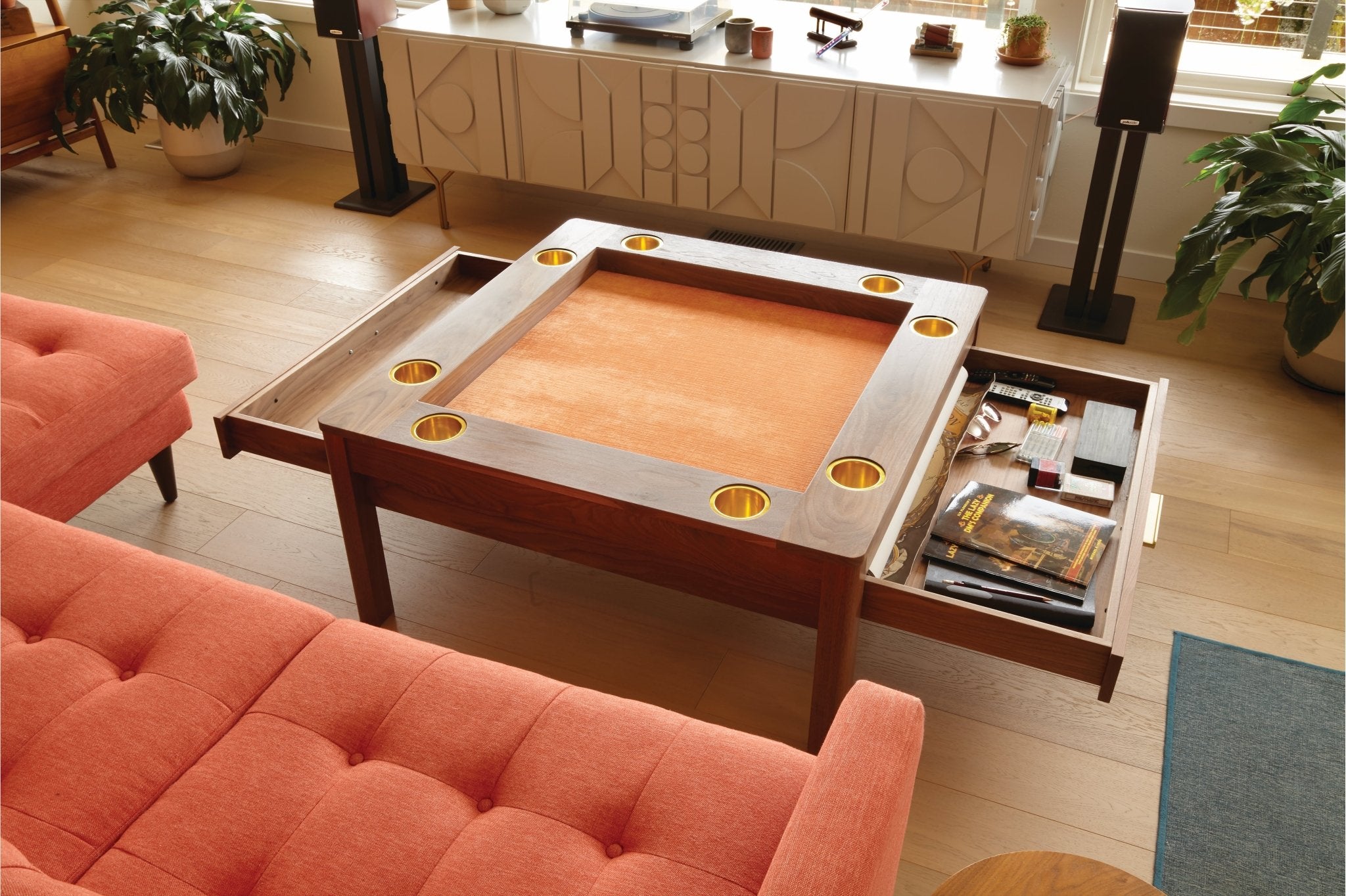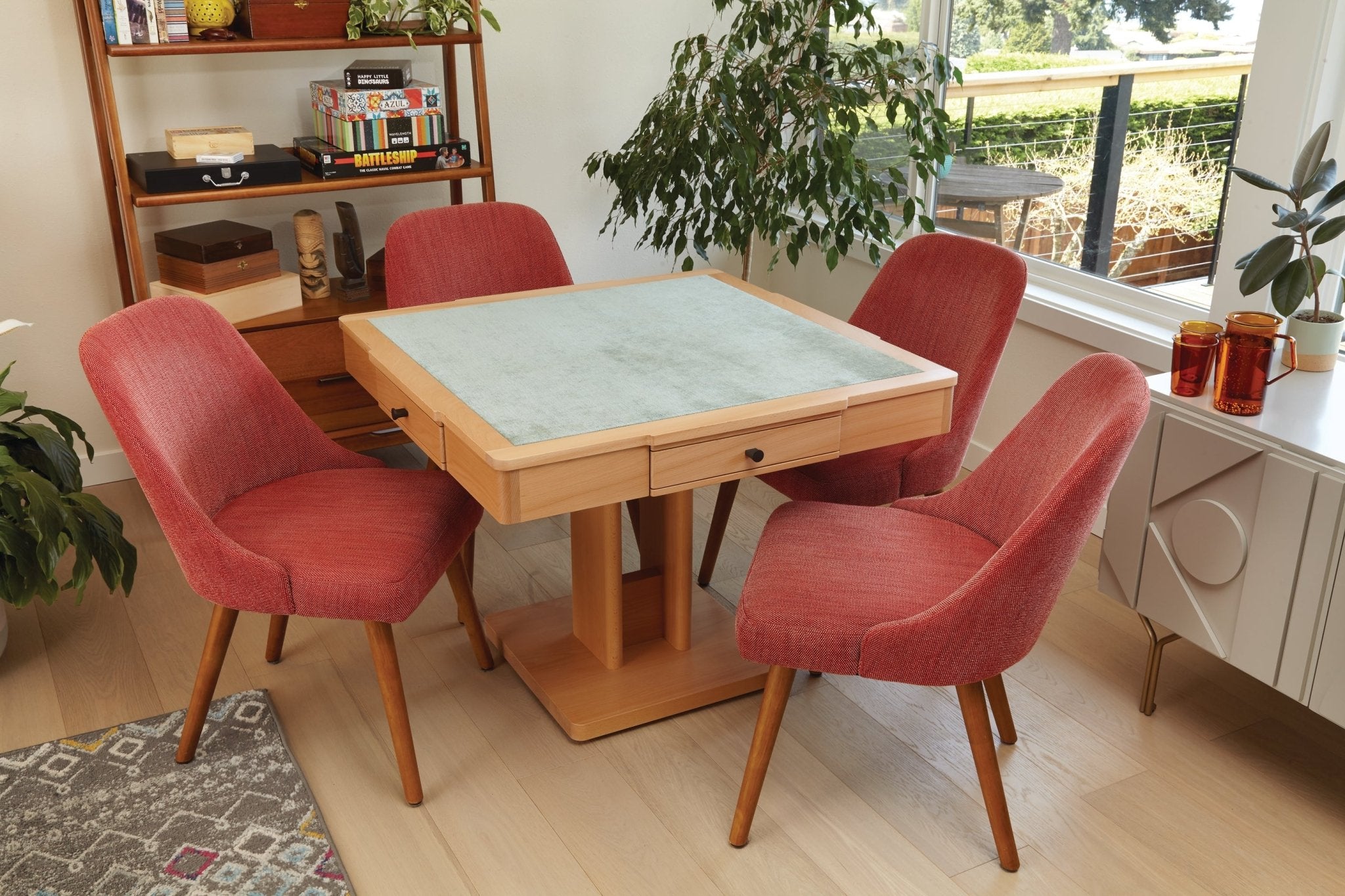How to Choose a Dining Room Table: Size & Design Considerations
If you want to create a warm and inviting home, there are few pieces of furniture that are as significant as your dining room table. In fact, it's so much more than just a surface for meals. Rather, it's the heart of your home, where you and your friends and family can come together to share delicious food, bond over board games, and create new memories.
Although picking the 'right' dining table can seem overwhelming, you can simplify this process by knowing exactly what to look for. From measuring your table to picking out shapes and materials, our guide will walk you through this process from A to Z.
Getting Started: Measuring Your Space
When it comes to choosing the perfect dining table, measuring your space is the most important first step.
An appropriately sized table won't only improve the aesthetic appeal of your dining room, but it will also mean more comfort and functionality when you're eating a family meal or hosting dinner parties!
Of course, ensuring you have the proper measurements for your new table will help you avoid some of the most common mistakes people make when they buy a dining room table. This includes overcrowding the room with a table that is too big or underestimating the space you have available, leading to a table that's too small.
Why measuring is important
Proper clearance around your dining table is crucial! After all, you'll want to allow enough room for foot traffic so that you can sit down and enjoy a delicious, relaxing meal. Without adequate space, moving around the table can be tricky, which can make your dining room feel cramped and uncomfortable.
Generally, there are two important factors you'll need to consider. These include:
-
Table-to-wall clearance: Ideally, you should aim for at least 3 feet of clearance on either side of your table. This will allow you to pull out chairs, stand up, and move around freely without feeling restricted.
-
Table-to furniture-clearance: Similarly, you should keep a distance of 3 feet between your dining table and any other furniture in the room. This means there's enough room to move and enough space for storage if you want to keep serving dishes and utensils on hand.
A step-by-step guide to determining the right table size
There is a super simple formula that you can use to measure any type of dining table, which includes two easy steps:
-
Measure your room: Start by measuring the length and width of your dining area. You should also be sure to note any fixed furniture or doors that could potentially affect your layout.
-
Getting your measurements: Once you have the measurements of the room, be sure to subtract 6 feet (3 feet for each side) from both the length and width measurements. This will give you the maximum size for your dining table, while allowing enough room around it.
Choosing The Right Shape For Your Dining Table
The shape of your dining table can make or break how well it fits into a room. For instance, a round table may be perfect to help you save space. But, if you choose a larger table, then it may have the opposite effect.
Here are some of the most common table shapes and how they can fit seamlessly into different spaces:
Rectangular dining tables
A rectangular dining table is a classic choice, and they're especially popular if you want a more formal dining room. The longer table top usually allows for a bigger surface area, which makes it easy to serve food and accommodate multiple place settings.
This table style is best for long, narrow rooms or open floor plans where you can easily include a statement piece. They're also big enough to decorate without making them feel cluttered. Of course, they're perfect for bigger families or dinner parties. So, if you love hosting big dinners, then this is a great choice.
Square dining tables
If you're looking for the perfect dining table for a smaller room, breakfast nook, or more casual dining area, then square tables are ideal. A square table is particularly helpful in small apartments with limited space. This is because it can maximize your floor area and improve the traffic flow around the room.
A square dining table also offers a more balanced and modern look. This makes them a fantastic pick for a more minimalistic aesthetic. Their equal sides also have a symmetrical design that works well in a square room.
Round dining tables
Like square dining tables, round tables are incredible in smaller spaces. In fact, you can use them in a dining room or your kitchen for a more intimate eating space.
For smaller families, a round table may also be a more practical choice. This is particularly true if you have young children since there are no sharp corners that may cause them harm. A round table also gives any room a cozier feel, which is something that other table shapes lack.
Picking The Best Material For Your Table
When it comes to the right material for your dining table, it's all about balancing style, durability, and maintenance. The material you choose will impact both the table's look and how well it stands up to daily use.
-
Wood: This is a classic choice that can bring warmth to any dining space. It fits perfectly with most aesthetics, including rustic chic and sleek modern styles. While wood may need some maintenance to prevent scratches and keep the material in tip-top shape, it's a timeless choice that will never go out of style.
-
Glass: Glass tables are a great option for smaller spaces and more contemporary looks. They can add an airy feel to your dining room and are easy to wipe down and clean. However, it's important to be careful with these tables since they can scratch easily and are usually best if you don't have any little ones running around.
-
Stone: Stone materials like granite can make a stunning statement in your home. They're durable and incredibly elegant but can be pretty heavy and require more regular maintenance to avoid stains.
Consider Your Table's Functionality
Another important factor to consider before buying a new dining table is its functionality. Are you after a standard dining room table, or do you want to get as much use out of your table as possible? This is an important question to consider if you have a family or a smaller space.
Families will usually need a sturdy table that can be used for eating, playing, or even as a space for the little ones to complete their homework after school. That means that you'll need to look for a table that is large enough to accommodate all of these activities and sturdy enough to withstand the wear and tear of all of this use.
In a smaller apartment, multi-purpose furniture can be a total life (and space) saver. For instance, you may use your table for dining and as a makeshift desk when you're working from home. Of course, you may also want to use it for various activities, such as crafting or playing board games.
A great example of a multi-functional table that can be used for pretty much everything is the Dresden. With removable table panels that allow you to switch from a gaming table to a traditional dining table in seconds, it's the perfect choice for any space.
FAQs
Which dining table is best, a round or rectangular table?
When it comes to the perfect dining table shape, there isn't necessarily a shape that is 'better' than others. Instead, it's all about your space and how you plan to use your table.
For instance, round tables are perfect for smaller spaces, but they offer less surface area and versatility. On the other hand, rectangular dining tables are incredibly versatile but can take up a ton of space. This may not be ideal if you live in an apartment or a smaller home.
What shape dining table saves the most space?
Generally, round tables save the most space. Since they don't have any corners, it's easier to move around them and can make any room feel more open. They can also be pushed into corners when they're not being used, which means you can save space when you don't need to use your table.
Final Thoughts
Finding the perfect table doesn't have to be stressful. When you know how to measure your space and the kind of style and material you'd prefer, it's as simple as picking one that fits the aesthetic of your home.
Remember: Multi-functional pieces are always a great investment. This is particularly true when it comes to bigger pieces of furniture since they can come in handy in any space.



